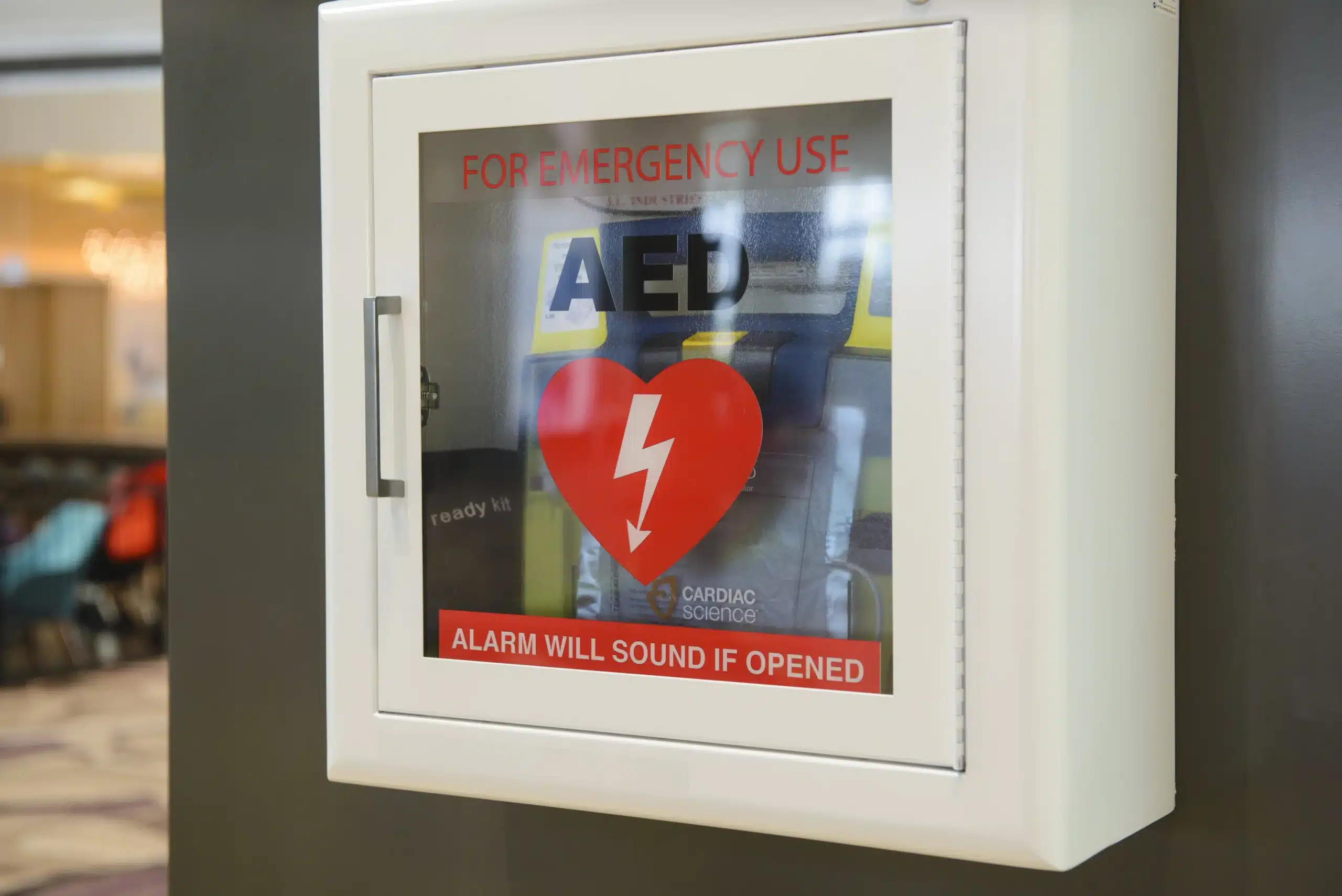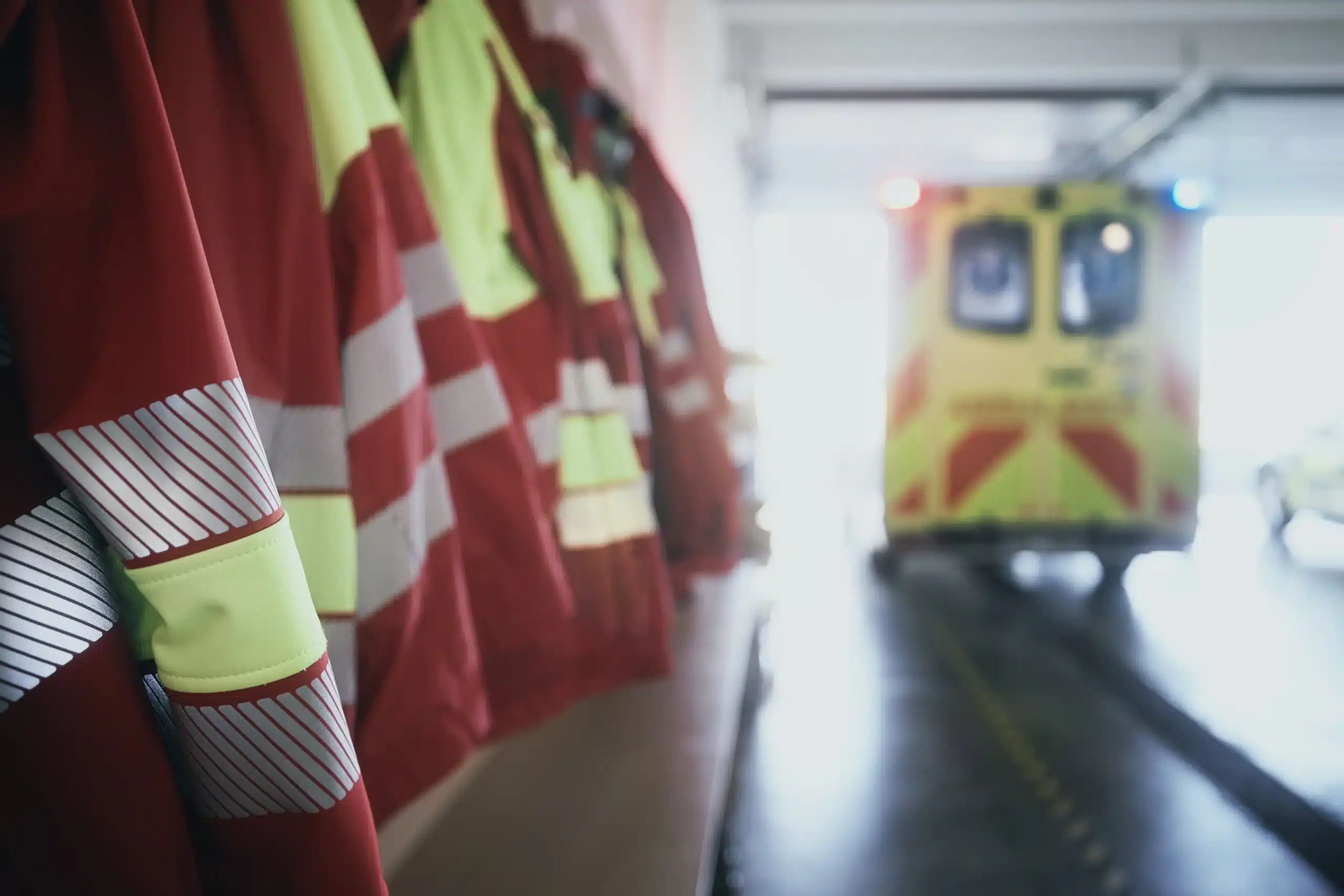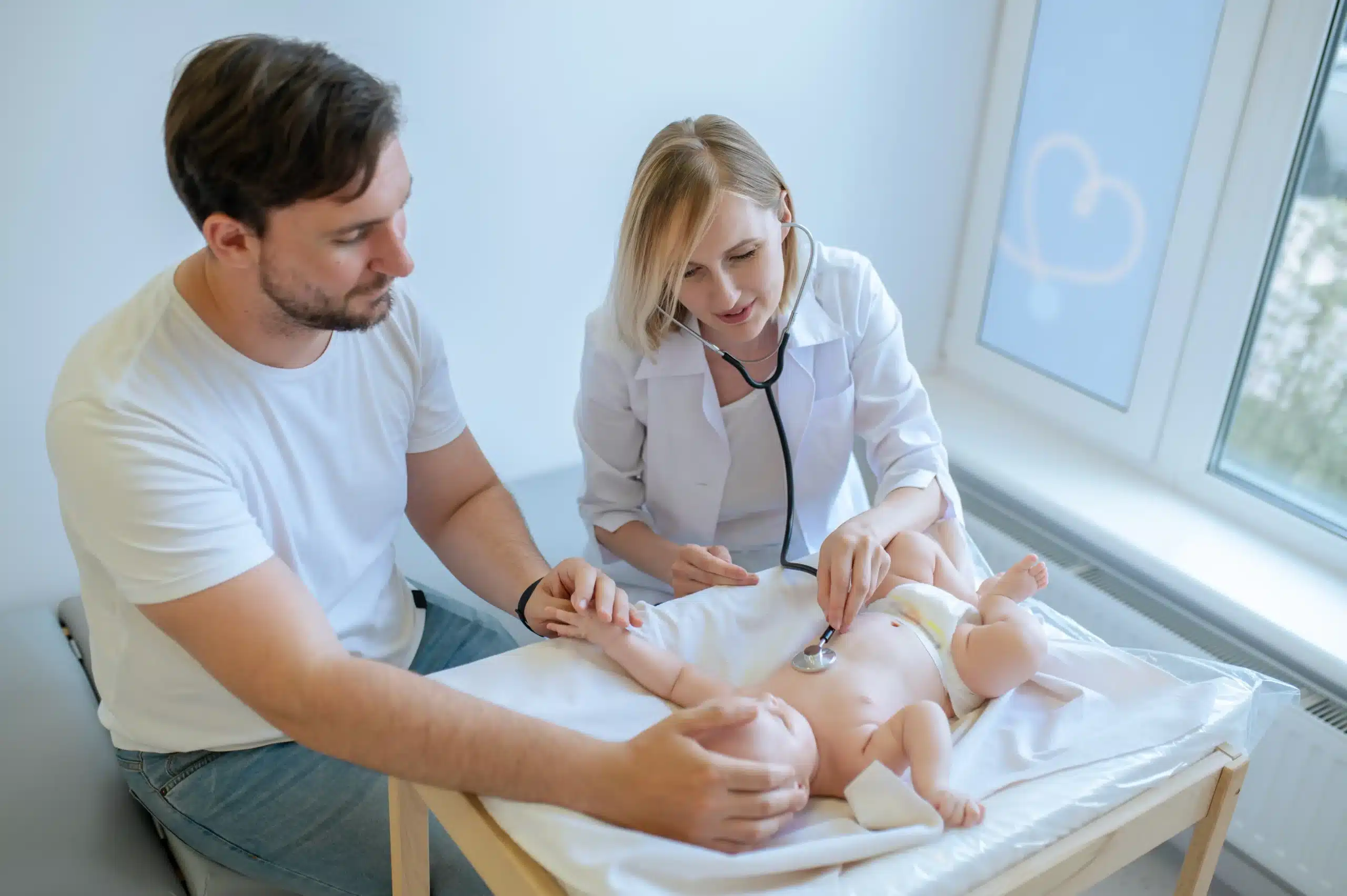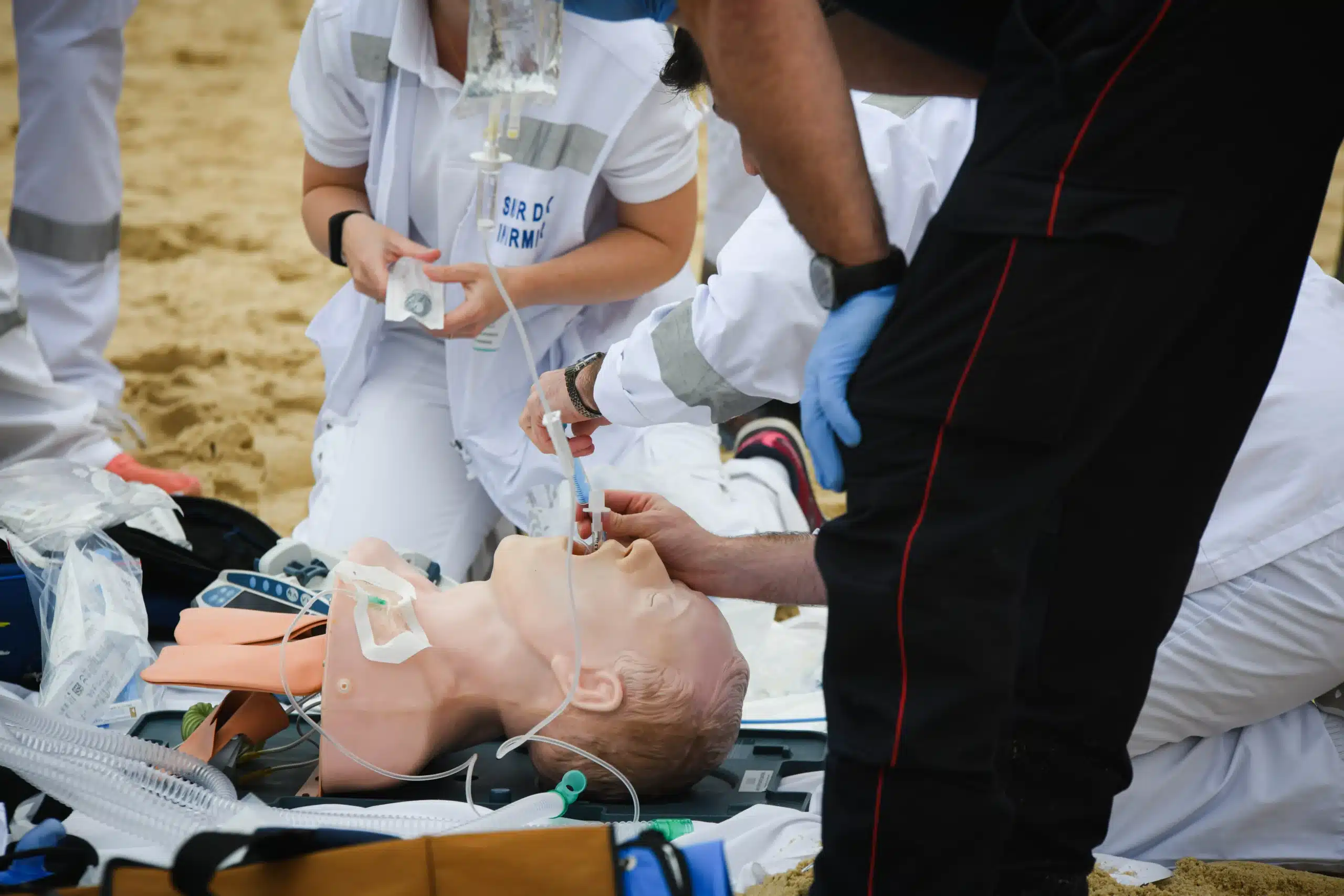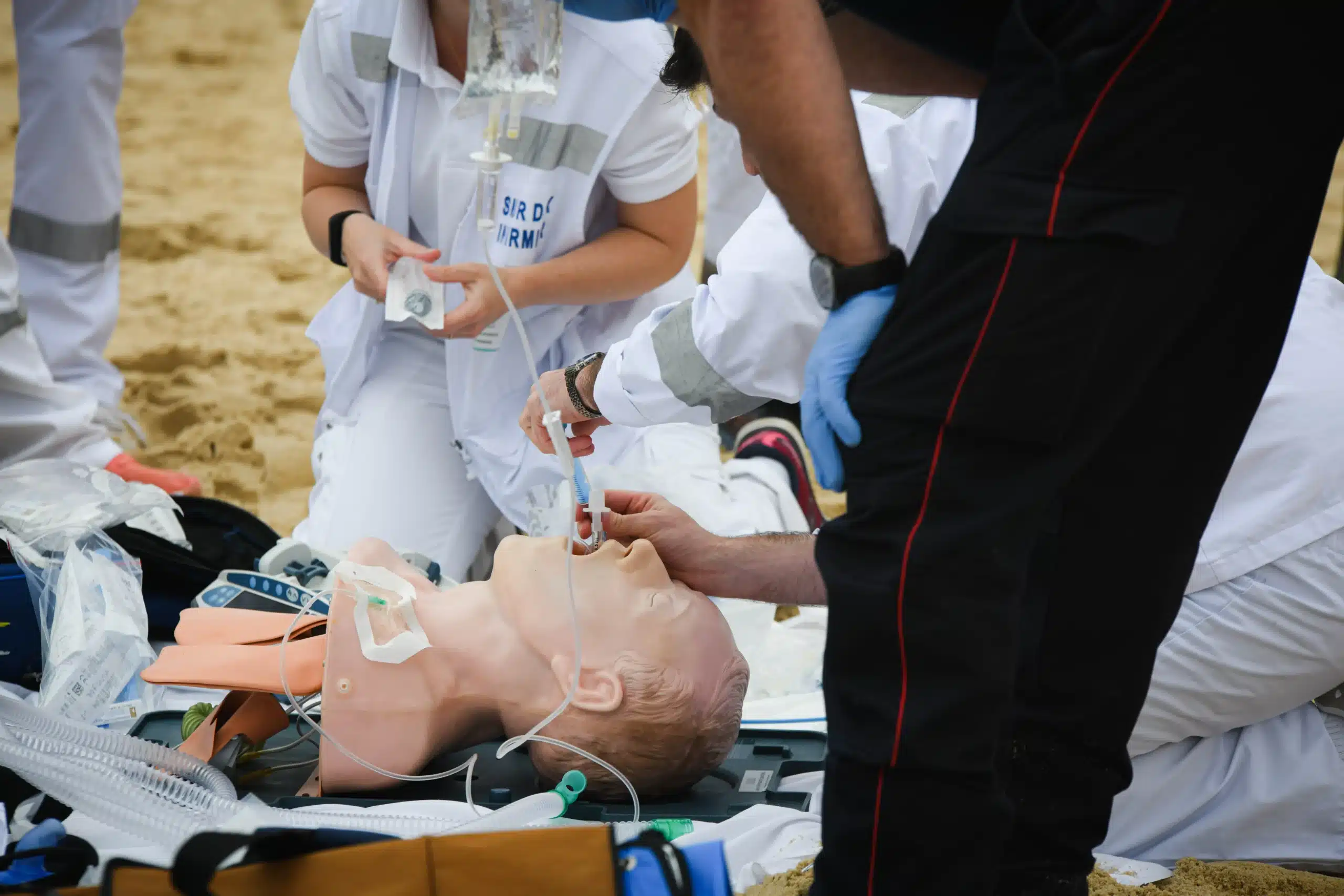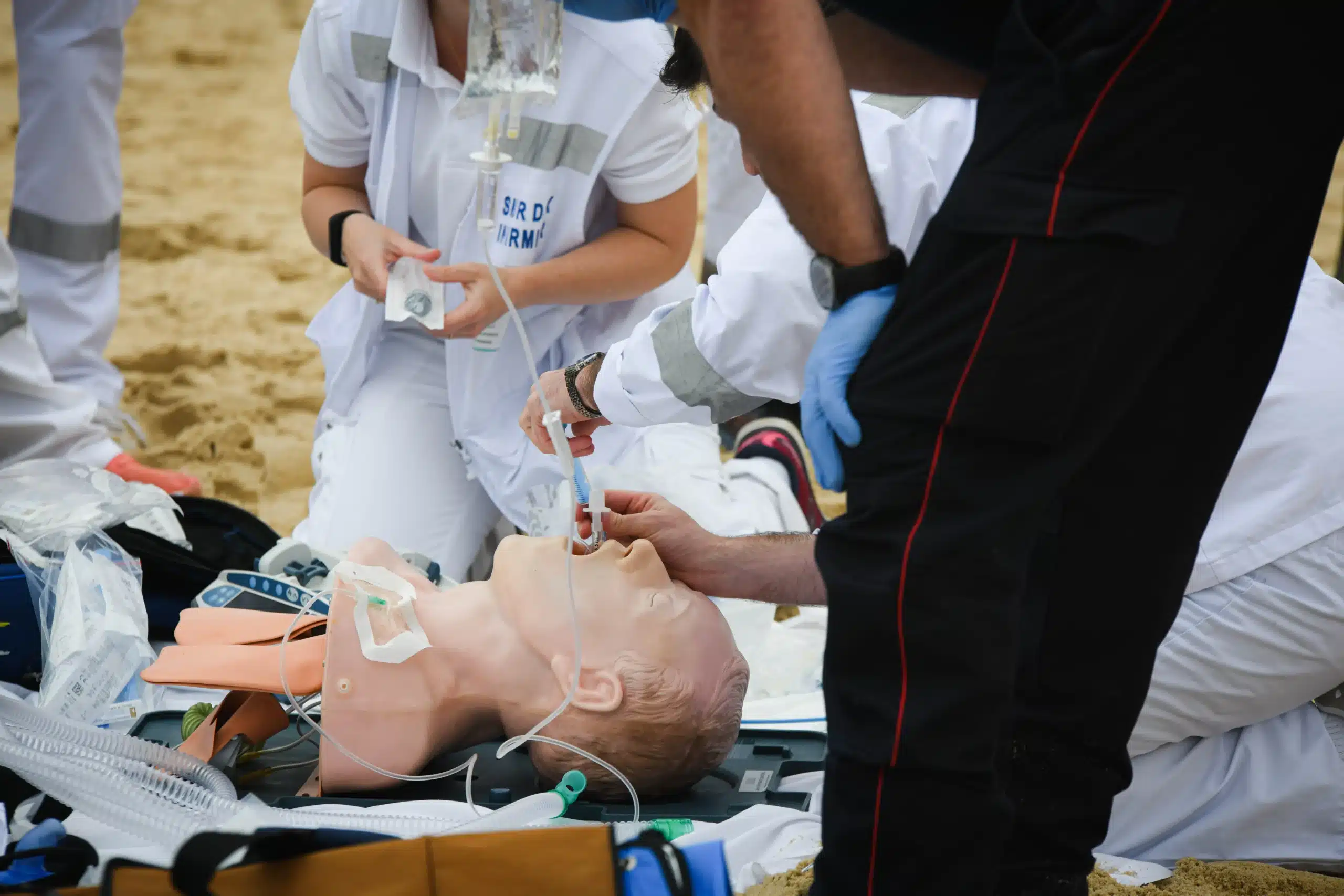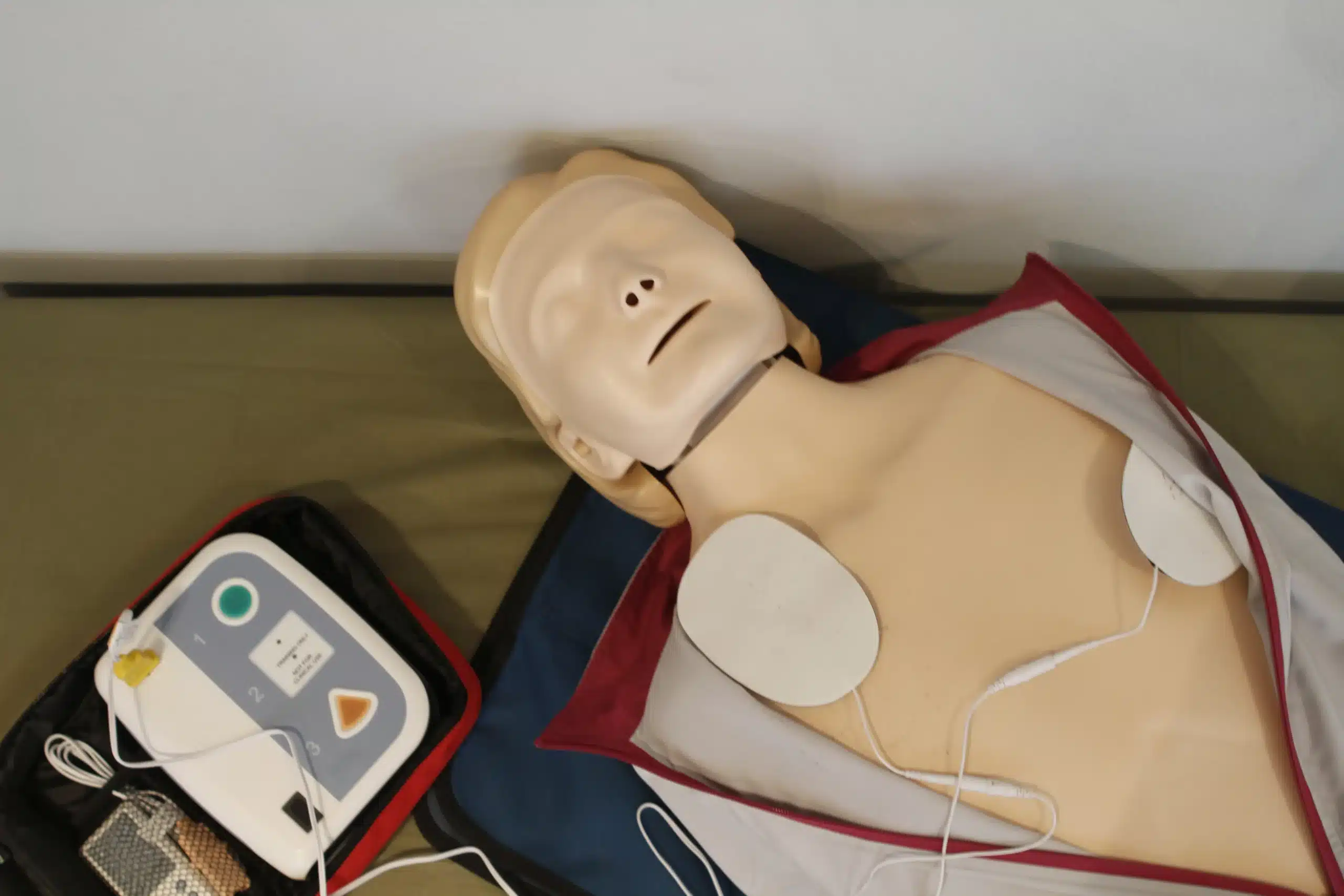Emergencies can happen anytime, anywhere. Are you ready to respond? Learning CPR equips you with the skills to handle life-threatening situations, and finding the right CPR classes in Pleasanton is the first step. This guide breaks down everything you need to know about CPR training, from the different types of courses and what to expect in class to the cost and the many benefits of becoming certified. Whether you’re looking to boost your resume, fulfill a job requirement, or simply gain the confidence to help in a crisis, this guide will help you find the perfect CPR training in Pleasanton for you.
Key Takeaways
- Find the Right CPR Class for Your Needs: Pleasanton CPR Classes offers various levels of certification, from basic CPR and first aid to advanced life support, ensuring you can find the perfect fit for your personal or professional goals.
- Affordable, High-Quality Training is Available: With a low price guarantee and group discounts, Pleasanton CPR Classes makes it easy and cost-effective to gain essential life-saving skills.
- Hands-On Practice Builds Confidence: In-person training provides the practical experience and expert feedback needed to master CPR techniques and respond effectively in emergencies.
What are CPR Classes in Pleasanton?
CPR classes in Pleasanton give you the skills to handle medical emergencies. These classes cover life-saving techniques like cardiopulmonary resuscitation (CPR) and often include training in other important procedures like Basic Life Support (BLS), Advanced Cardiovascular Life Support (ACLS), and Pediatric Advanced Life Support (PALS). Many local courses are certified by the American Heart Association, ensuring high-quality training that meets nationally recognized standards. You’ll find a range of courses, from combined CPR and first aid to specialized certifications, so you can choose the training that best fits your needs.
Classes are usually taught by experienced, AHA-certified instructors who also work as healthcare providers. This means you receive well-rounded instruction that combines theoretical knowledge with hands-on practice. Group training sessions are often available, which can create a more comfortable learning environment and make it easier for organizations to train their teams. Learning CPR in Pleasanton means gaining valuable skills and the confidence to act quickly and effectively in emergencies, potentially saving lives.
CPR Class Types
Knowing which CPR class is right for you can feel overwhelming. This section breaks down the different types of CPR training offered by Pleasanton CPR Classes, so you can choose the best fit.
CPR and First Aid
Daily American Heart Association CPR and First Aid certification courses are available in Pleasanton. These classes equip you with the skills to respond to both life-threatening emergencies and common injuries. Learning both CPR and first aid together provides a well-rounded skill set for various situations.
Basic Life Support (BLS)
BLS certification goes beyond basic CPR. It includes CPR techniques, AED instruction, and additional life-saving skills. BLS training is often a job requirement for healthcare providers and other professionals. It’s also valuable for anyone wanting a more comprehensive understanding of emergency response.
Advanced Cardiovascular Life Support (ACLS)
ACLS courses are designed for healthcare professionals who manage cardiovascular emergencies, including cardiac arrest. These classes cover advanced techniques and require a solid foundation in basic life support.
Pediatric Advanced Life Support (PALS)
PALS training focuses on responding to emergencies in infants and children. Like ACLS, PALS certification is geared towards healthcare providers and builds upon basic life support skills. It emphasizes the specific needs of young patients.
RQI Classes
RQI (Resuscitation Quality Improvement) offers a streamlined path to CPR certification. This program combines online learning with in-person skills testing, allowing you to earn your certification card the same day. RQI is a convenient option for busy professionals needing to renew or obtain certification quickly.
Choose the Right CPR Class
Finding the right CPR class means considering a few key things, from the training provider’s reputation to the instructor’s qualifications and the course format. Taking the time to research these aspects will ensure you receive high-quality training and feel confident in your abilities.
Reputable Training Providers
A recognized training provider is essential. Look for organizations with a solid track record and certifications from established institutions like the American Heart Association (AHA).
Safety Training Seminars
Safety Training Seminars offers AHA-certified CPR, BLS, ACLS, PALS, and First Aid classes in Pleasanton. They provide daily classes and flexible scheduling. Their commitment to customer service and a low price guarantee makes them a solid option.
American Heart Association Training Centers
An AHA certification is widely recognized and respected. It’s valuable for personal growth and professional development, showing your commitment to safety and emergency preparedness. For those specifically seeking training aligned with AHA guidelines, make sure the training center you choose is officially certified.
Local Community Centers and Hospitals
Many community centers and hospitals offer CPR and first-aid training. CPR Education offers AHA-certified courses, often at your location. This can be a convenient option for group training or organizations.
Instructor Qualifications
The instructor’s expertise directly affects your training. Experienced instructors, often with medical or emergency response backgrounds, provide valuable real-world insights. Ask about an instructor’s credentials and experience before signing up.
Class Formats and Schedules
CPR classes have different formats and schedules to suit various learning styles and preferences.
In-Person Training
Traditional in-person training offers hands-on learning and direct interaction with the instructor. Providers like Jeff Patterson CPR focus on in-person classes, issuing CPR cards upon completion. This format is ideal for those who learn best through hands-on practice and direct feedback.
Online and Hybrid Options
For flexibility, consider online and hybrid options. Pleasanton CPR Classes offers the RQI program, combining online coursework with a skills test and same-day certification. This blended approach can be a good fit for busy schedules.
Flexible Scheduling
Busy schedules shouldn’t prevent you from learning CPR. Many providers, including Safety Training Seminars, offer flexible scheduling, including evening and weekend classes. Their extended daily hours (8 am to 10 pm) and many locations across Northern California add to the convenience. This accessibility makes it easier to fit training into your life.
What to Expect in a CPR Class
So, you’ve signed up for a CPR class—congratulations! Knowing this lifesaving skill can make a real difference. Here’s what you can expect during your CPR training:
Class Structure and Duration
CPR classes typically blend theory and hands-on practice. Expect a combination of lectures, demonstrations, and interactive exercises. Your instructor will cover essential concepts like recognizing cardiac arrest, performing chest compressions, giving rescue breaths, and using an AED. Most CPR courses, including those for BLS and CPR/First Aid, run for a few hours, making them easy to fit into your schedule.
Hands-On Practice
CPR is a physical skill. You’ll spend a good portion of your class practicing on manikins. This hands-on training is crucial for building muscle memory and confidence. Instructors provide feedback and guidance, ensuring you learn the proper techniques. Unlike online-only courses, in-person training gives you the real-world experience you need to respond effectively in an emergency. As the experts at Premium CPR point out, online-only learning simply can’t replicate this essential aspect of CPR training.
Certification Process
Upon successful completion of your CPR class, you’ll receive an official certification card. This nationally recognized certification, often from organizations like the American Heart Association (AHA), demonstrates your CPR proficiency. These certifications are typically valid for two years, after which you’ll need a refresher course.
Address Common Concerns
One common question is the validity of online-only CPR certifications. While convenient, these certifications often aren’t accepted by employers and professional organizations. Many students who opt for the online-only route find themselves needing to retake an in-person class to meet job requirements, as highlighted in Premium CPR’s discussion of the online-only CPR scam. Choosing an in-person class from a reputable provider like Safety Training Seminars ensures your certification is widely recognized and respected. For high-quality, affordable training, check out our low price guarantee and group discounts.
Cost and Value of CPR Training
Knowing the cost of CPR training is a practical first step. Let’s break down the typical price ranges for different CPR courses in Pleasanton.
Course Pricing
CPR training costs vary depending on the type of course. Pediatric CPR classes generally range from $25 to $40. CPR and First Aid training combined usually falls between $40 and $60 per person. For healthcare providers needing Basic Life Support (BLS) certification, the average cost is around $60 to $80. These price points make CPR training accessible to a broad range of people, which is essential given how important these skills are. For those looking for CPR and First Aid certification, you can find more information on pricing and available courses.
Group Discounts and Promotions
If you’re training a group, look for discounts. Many CPR training providers in Pleasanton offer reduced rates for group CPR training sessions, often around $35 to $45 per person. Group discounts not only make training more affordable but also create a positive learning environment where participants can learn and practice together. This can be a great option for businesses, community organizations, or even groups of friends and family.
Low Price Guarantee
Pleasanton CPR Classes, offered by Safety Training Seminars, is committed to providing affordable, high-quality training. We offer a low price guarantee in Alameda County, ensuring you receive the best possible value. This commitment to affordability takes the stress out of budgeting for this important training. We also offer RQI classes, and you can learn more about those on our RQI class page.
Benefits of CPR Certification
Getting CPR certified offers valuable benefits, from personal growth to career advancement. Let’s explore some key advantages:
Personal Safety Skills
CPR and first-aid certification equips you with life-saving skills. Knowing how to perform CPR and administer basic first aid can make all the difference in emergencies. These skills bring confidence and peace of mind, knowing you’re prepared for unexpected situations.
Professional Opportunities
An American Heart Association (AHA) certification is a valuable asset. It shows your commitment to safety, making you a strong candidate for jobs in healthcare, education, childcare, fitness, and other fields. Many employers require or prefer candidates with CPR certification, giving you a competitive edge. These certifications often satisfy workplace safety training requirements. CPR and first-aid skills are also valuable additions to your resume.
Community Impact
CPR and first-aid training empowers you to make a difference. By becoming certified, you contribute to a safer, more prepared community. You become a resource for your neighbors, friends, and family, ready to assist when needed.
Career Advancement
For healthcare professionals or those in related fields, CPR certification, especially advanced certifications like BLS, ACLS, and PALS, can boost career prospects. These certifications demonstrate professional development, enhance your resume, and open doors to new opportunities. They can also fulfill continuing education requirements for maintaining licenses or other certifications.
Related Articles
- BLS, ACLS, PALS, CPR & First-aid Classes in Pleasanton, CA
- Basic Life Support (BLS) in Pleasanton: Your Complete Guide
- ACLS Certification in Dublin: Your Complete Guide – Pleasanton CPR Classes
- PALS Certification in San Ramon: Your Complete Guide – Pleasanton CPR Classes
- RQI Dublin: The Ultimate Guide to Resuscitation Quality Improvement – Pleasanton CPR Classes
Frequently Asked Questions
How long does it take to get CPR certified?
Most CPR and first-aid courses can be completed in a single day, often within a few hours. More specialized training like BLS, ACLS, and PALS may require additional time. RQI certification, which combines online learning with in-person skills testing, can often be completed the same day.
What’s the difference between CPR and first aid?
CPR focuses on restoring breathing and circulation in someone who has experienced cardiac arrest. First aid covers a broader range of injuries and illnesses, from minor cuts and burns to more serious situations like choking or allergic reactions. Many courses combine CPR and first-aid training, providing comprehensive emergency response skills.
How much do CPR classes cost in Pleasanton?
The cost varies depending on the course type and provider. Basic CPR and first-aid courses typically range from $40 to $60. BLS classes for healthcare providers usually cost between $60 and $80. Look for group discounts and promotions, which can lower the per-person cost. Pleasanton CPR Classes offers a low-price guarantee, ensuring you get the best value for your training.
Do I need to renew my CPR certification?
Yes, CPR certifications typically expire after two years. Renewal involves taking a refresher course to ensure your skills and knowledge are up-to-date. This helps maintain your proficiency and confidence in responding to emergencies.
Is online-only CPR certification accepted?
While online-only CPR courses offer convenience, they often don’t meet the requirements of employers and professional organizations. Many workplaces require in-person training with hands-on practice and skills assessment. Check with your employer or licensing board to confirm their specific requirements. In-person training ensures you gain the practical skills and confidence needed to respond effectively in real-life emergencies.
